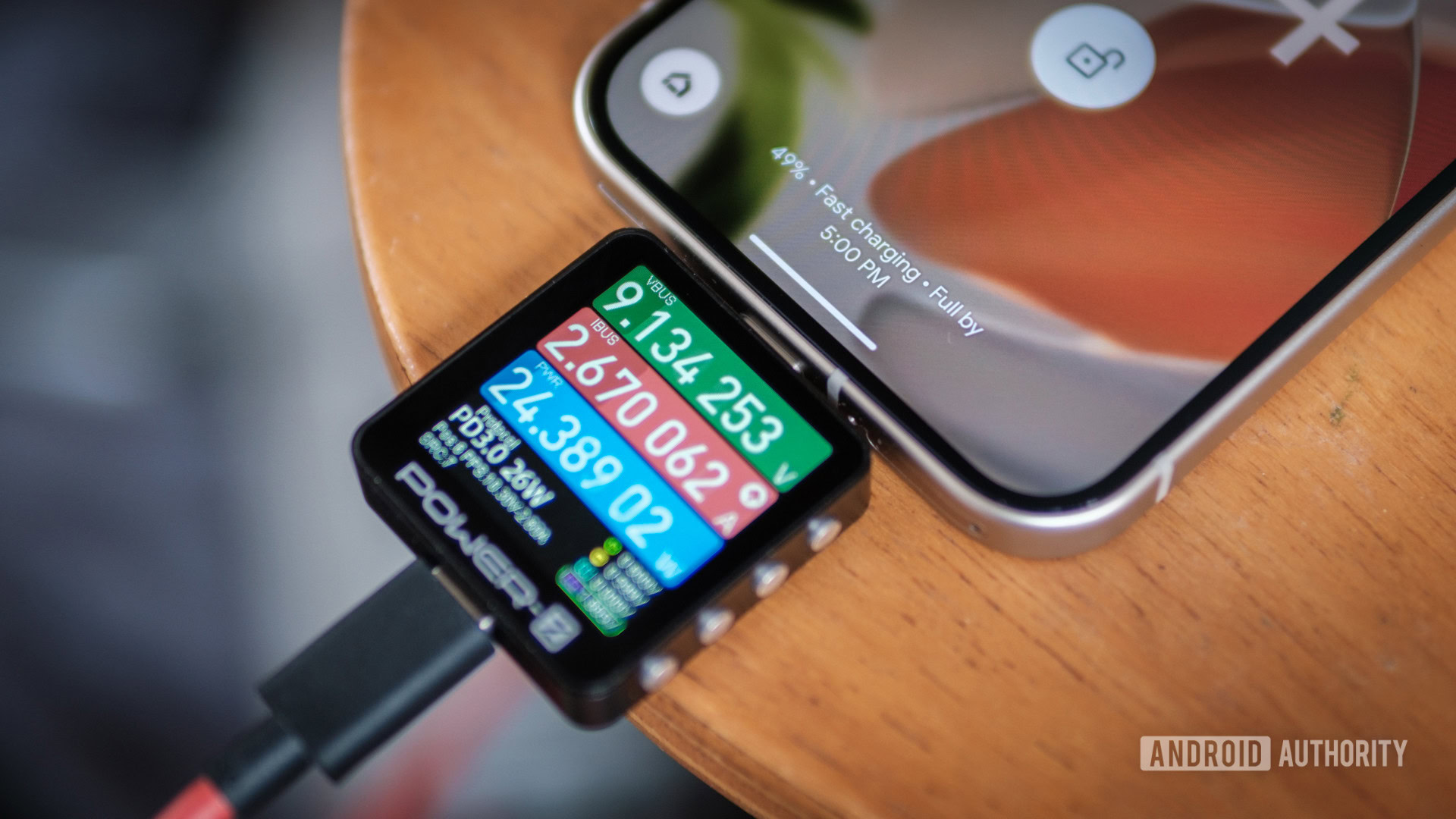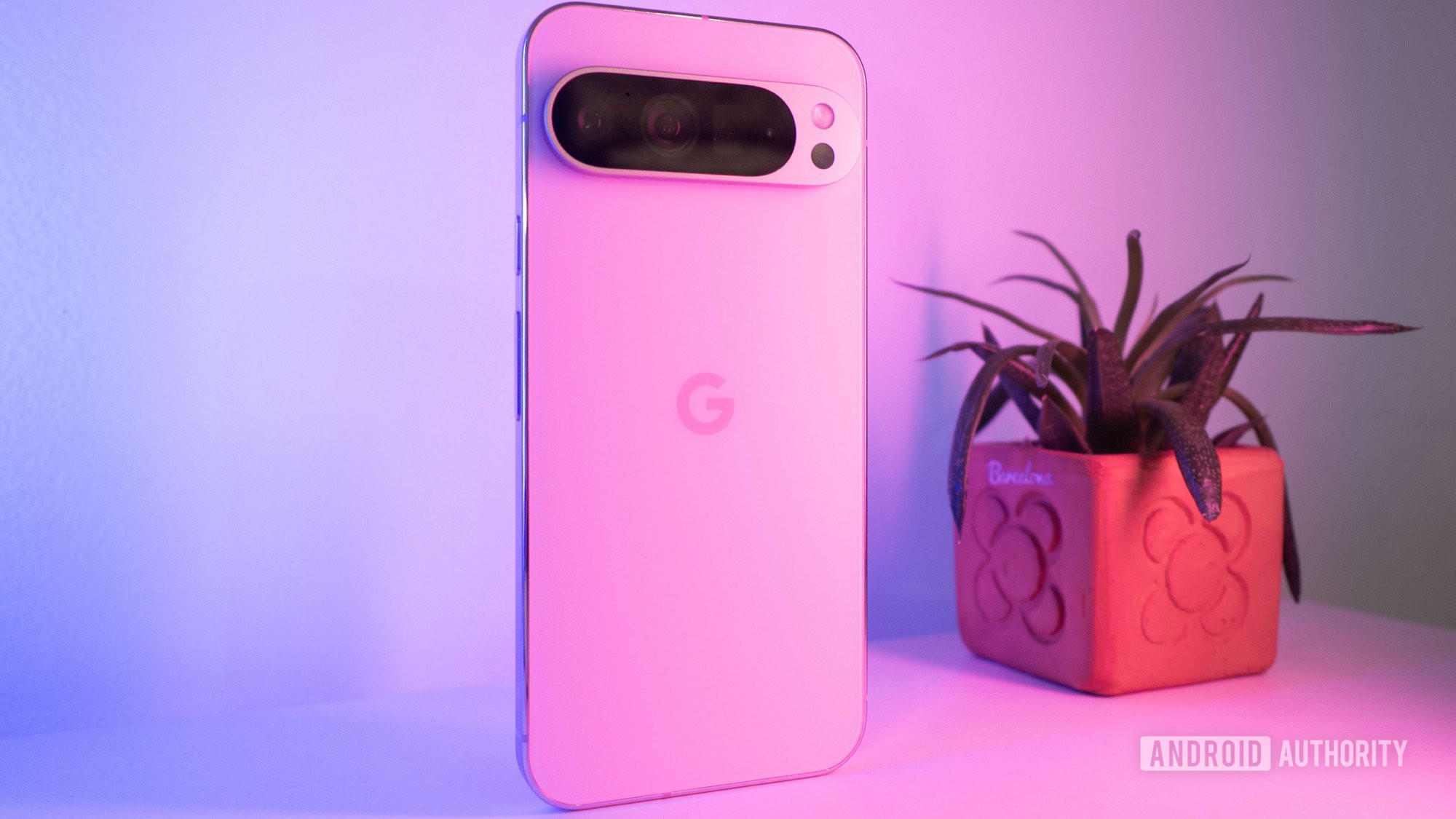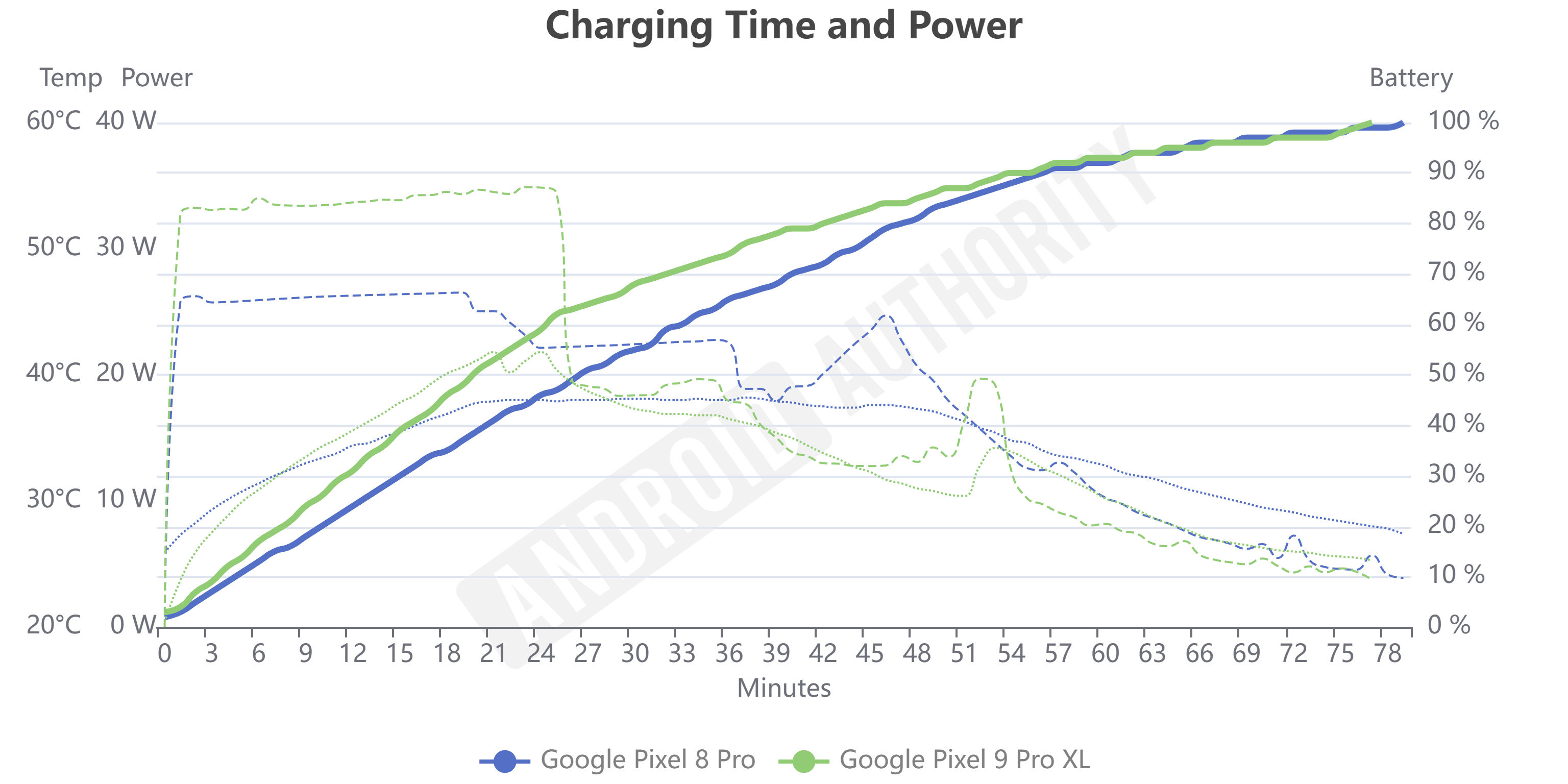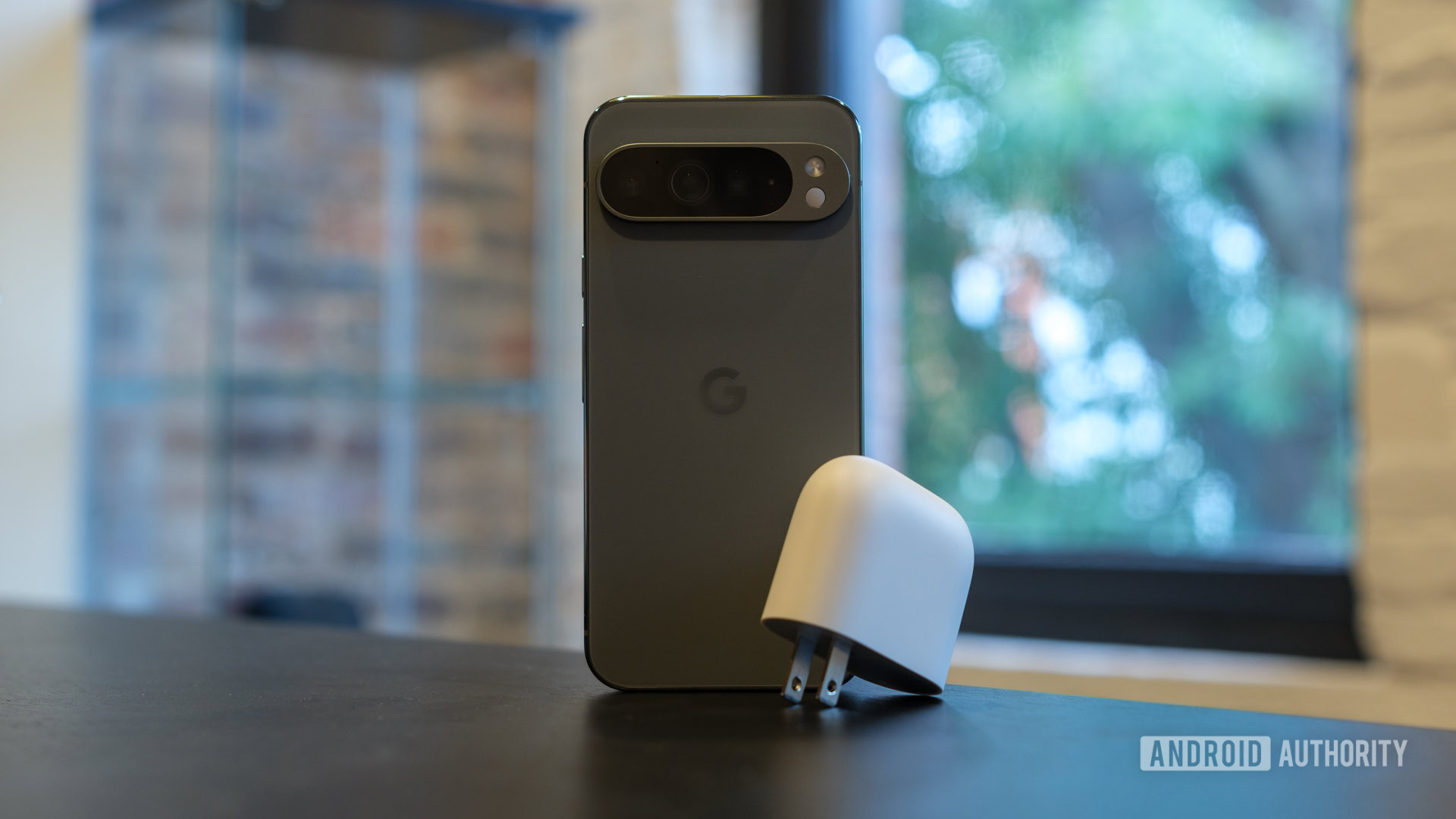Affiliate links on Android Authority may earn us a commission. Learn more.
Google has made fast charging the Pixel 9 Pro XL an absolute nightmare
Published onMarch 21, 2025

Remember when I said I’d buy the Pixel 9 Pro XL because it charges faster? Well, it looks like I’m about to eat my words. Plugging the Pixel 9 Pro XL to fast charge sent the Android Authority team down a rabbit hole of cables and chargers to find out what works and what doesn’t. Google’s latest flagship has made USB-C even worse than it already is.
While it’s true that the Pixel 9 Pro XL is a fair bit quicker to charge to key milestones, thanks to its boosted 37W power draw, it turns out it’s not all that fast to full after all. Worse, you’re probably not going to be able to hit peak power without buying a new charger — which I’m not prepared to do (again!).
Yes, the phone still uses USB Power Delivery PPS; there are tons of plugs out there for that. Yes, it only requires 37W; again, you’ll find many chargers that can push much more power than that. If you follow the general wisdom for picking the right charger, you’d be forgiven for thinking you’re covered by the assortment of best wall chargers on the market. However, the Pixel 9 Pro XL specifically requires 18V at 2A to fast charge, a much higher voltage than the 9-10V used by most other PPS smartphones, including Google’s other Pixel models, including last year’s Pro, and Samsung’s 45W Galaxy S24 Ultra.
Pixel 9 Pro XL fast charging explained

To figure out what works and what doesn’t, I tried a selection of our previous favorite chargers that matched the seemingly key requirements but had no luck hitting the Pixel 9 Pro XL’s 37W power level. Instead, I was capped at 27W (9V/3A), essentially the same old power level as last year’s Pixel 8 Pro and the 9 Pro. I grabbed a 5A cable for the XL to see if that could maximize the current output, but to no avail. Thankfully, the Pixel 9 Pro can hit close to its advertised 27W power level when still charging at 9V/3A.
The Pixel 9 Pro XL needs 18V/2A over USB PD PPS, but good luck researching that info.
It’s only when I ordered Google’s new 45W charger and an assortment of diligently researched third-party plugs that I found a few capable of clicking the XL into 37W charging. The one thing those plugs all had in common is 20V USB PD PPS support, but good luck finding that listed on most product websites. Brands barely reveal which charging protocols their plugs support, let alone the specific power levels. Even if consumers want to waste hours researching this information, they can’t.
To throw extra confusion into the mix, Google’s “Fast charging” popup tells you nothing about whether your plug is actually charging the Pixel 9 Pro XL as quickly as possible or not. Even eyeballing the full charge ETA won’t tell customers if their plug is working optimally. The phone seems to take roughly as long as the Pixel 8 Pro does to charge fully, even when powered at 37W — so the “time to full” displays roughly the same ETA even if you use a PPS plug that isn’t topping it up with maximum power. That makes it very hard to diagnose if a charger is working optimally or not. Instead, 37W charging allows the Pixel 9 Pro XL to hit 50% and 75% milestones faster, before pulling back more aggressively on power for a very slow charge in the final stages. Talk about giving with one hand and taking with another.

Obviously, this is all bad news for consumers and makes the already horrendously messy world of USB-C accessories even bleaker. Just when we thought we’d escaped the convoluted mess of proprietary charging, the Pixel 9 Pro XL throws a wrench in the works. I can already hear the cries: “Why is my Pixel XL charging so slowly,” and eager helpers popping up with 101 different possible reasons. That said, Google isn’t alone in requiring higher voltage charging over PSS; ASUS’ 65W ROG and Zenfone smartphones also make use of higher voltages for charging. However, the fact remains that these are the exceptions, not the rule.
Why do some companies require a high voltage while others can opt for lower ratings? While I can only guess at Google’s rationale, higher voltages have the benefit of dropping less power over cable resistance. It also means you can get away with cheaper and more common 2A or 3A-rated cables rather than a 5A one. The downside is that stepping down voltages to battery level will incur some power loss and, therefore, additional heat inside the handset. You also can’t use high voltages when charging the final stages of a phone battery, which is exactly what I’ve observed with the XL. It drops to 9V and around 18W or so once the cell hits about 60%.
What hope is there if, after researching power and protocols, consumers can still pick the wrong charger?
I’m not sure there’s a particularly brilliant reason for opting for 18V over 9V, especially when we know high-current charging works just fine in other handsets at higher power levels. Perhaps there’s some internal component constraint. If you want to see USB PD PSS support done correctly, the Xiaomi 15 Ultra supports 60W via 20V/3A and 45W via 9v/5A. Clearly, fast charging can be done at either voltage, but it requires additional circuitry and expense (the cheaper Xiaomi 15 is capped at 27W).
What’s the best charger for the Pixel 9 Pro XL?

If you need a plug to charge your Pixel 9 Pro XL as quickly as possible, we’ve successfully tested the Google 45W USB-C charger ($29.99 at Amazon), Ugreen Nexode Pro 100W ($74.99 at Amazon), and Satechi 165w USB-C 4-Port ($119.99 at Amazon). The common theme seems to be that higher-wattage multi-port PPS chargers are more likely to support the required voltage, likely because they are designed for charging laptop batteries. But even that’s not a guarantee.
While you might be able to find a suitable wall charger after a bit of research (be sure to check our list of diligently researched best USB-C chargers for more options), power banks are much harder to buy correctly. I’ve not identified a single one that lists its output capabilities sufficiently to tell if the XL will charge as fast as possible or not. Ultimately, you’re probably stuck with slower charging when out and about with the Pixel 9 Pro XL for the foreseeable future. Depressingly, that’s exactly when you’re most likely to need a fast top-up.
While Google hasn’t quite made all the USB PD PPS plugs I’ve spent the last three years accumulating obsolete if I buy the XL (they’ll still charge it sort of quickly), I’m not prepared to buy another new wall charger so soon just to maximize the XL’s potential — talk about unnecessary e-waste. I think I’ll save some money and opt for the slower-charging Pixel 9 Pro instead.

Clean, distinct design
Solid 45W charging speed

Durable & fast
Charges laptop

Excellent efficiency
Four USB-C ports